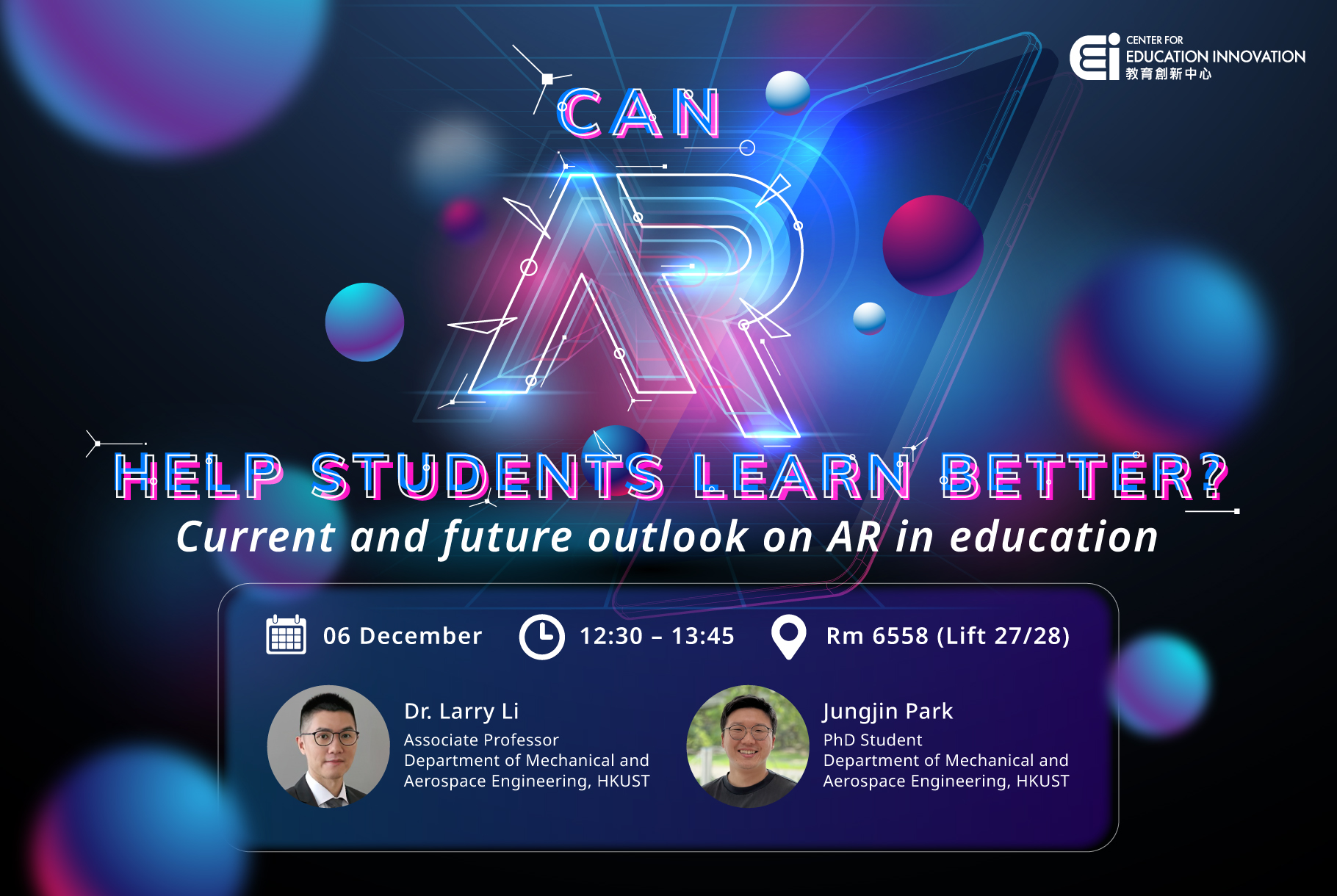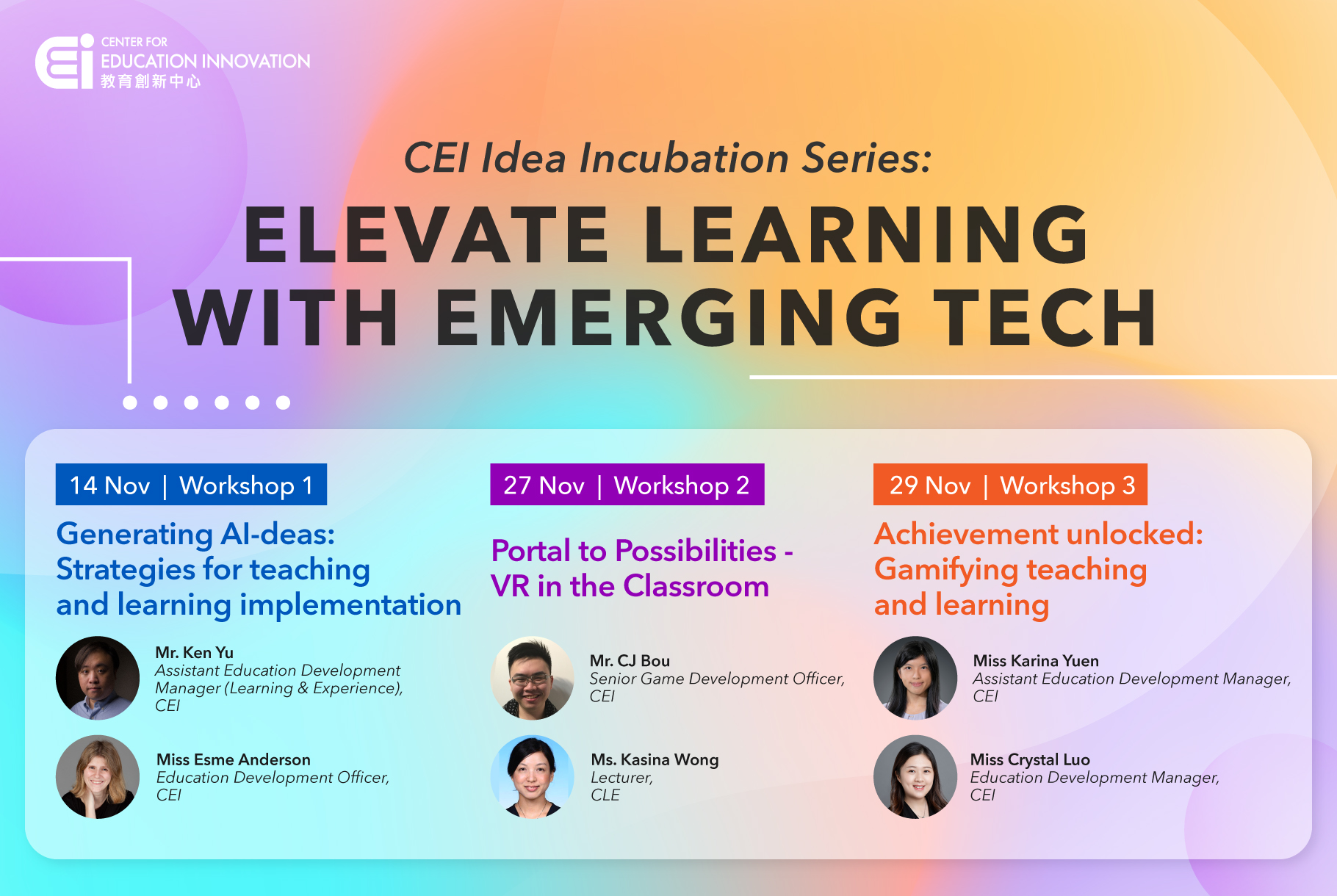Can AR help students learn better? Current and future outlook on AR in education
Body
A pressing need for innovation in pedagogy has led educators to explore the use of emerging technologies in the classroom. One such technology is augmented reality (AR) – a powerful tool that is emerging into the spotlight due to its immersive possibilities and functional versatility. In this workshop, we will share our latest efforts to harness AR to enhance engineering education at HKUST. First, we will describe the development, implementation, and evaluation of our in-house AR application “AR Tunnel”, which is now used by around 100 undergraduate and postgraduate students every year to help prepare them for a wind tunnel laboratory project undertaken in courses on aerodynamics. We will then showcase the power of combining AR and gamification by introducing our ongoing project “Aerodynamics GO” and discussing the synergy that can be achieved by gamifying AR. Lastly, we will share our vision of what educational AR experiences might look like in the future, one in which new hardware capabilities will unlock unprecedented immersivity. This workshop aims to provide educators with insights into the current and future trends of AR, empowering them to reimagine education in their own contexts.




